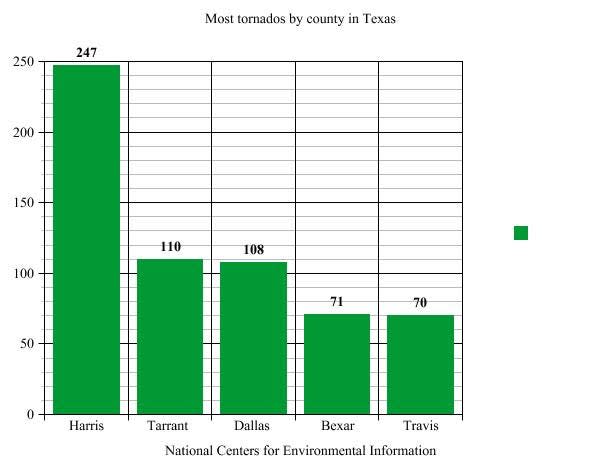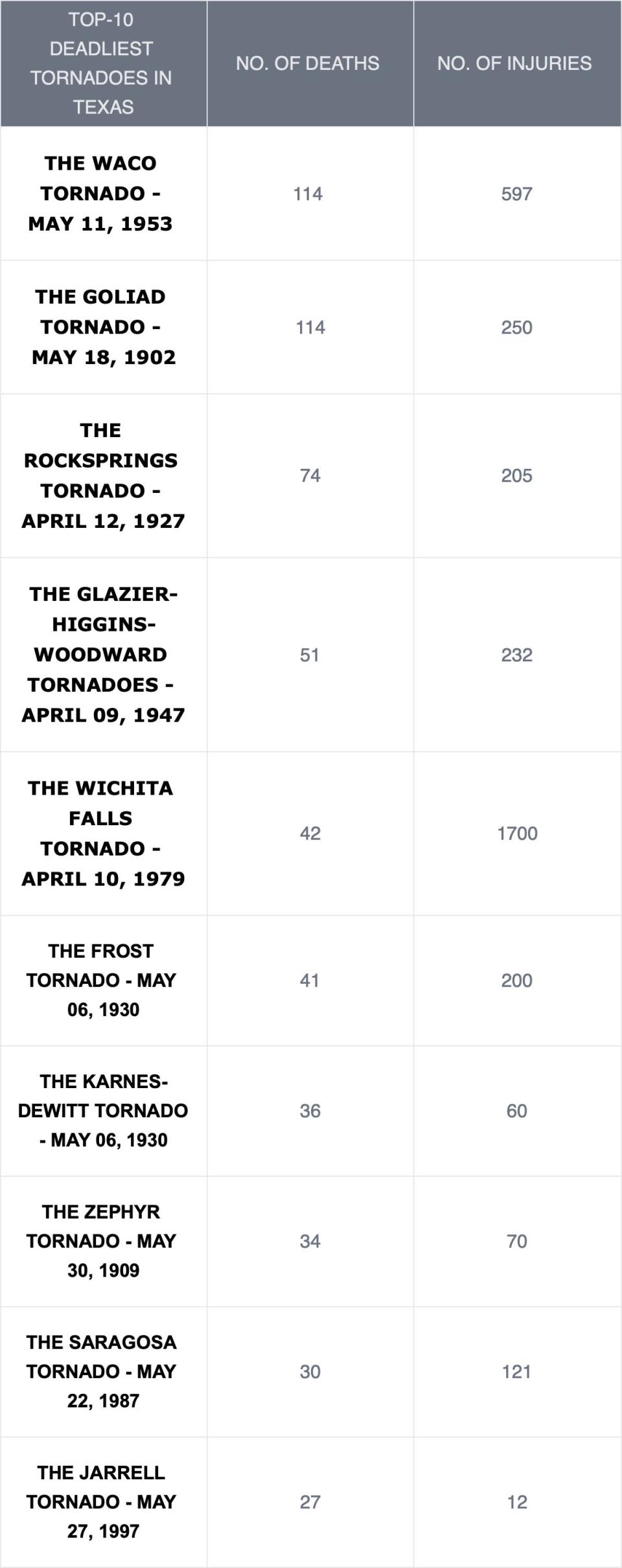It's tornado season in Texas. See what counties are most likely to see twisters
The duck-and-cover tornado drill is all too common if you grew up in Texas.
Spring usually marks the start of tornado season in Texas. According to the National Weather Service, Texas averages 137 tornadoes each year, the most of any state in the country.
Depending on where you reside in Texas, tornados are more common and stronger in certain counties.
Where in Texas are tornadoes likely to occur?
Tornadoes are most likely to occur in Houston, San Antonio, Dallas, Austin and Fort Worth, according to data from National Centers for Environmental Information. However, the database recorded the information by county.
Those major countries are Tarrant, Bexar, Travis, Dallas and Harris.
The total tornadoes reported date back to 1950.

Harris County is 1,778 square miles in size, which is nearly the size of Dallas and Tarrant counties combined. According to the National Oceanic and Atmospheric Administration, if that variable is removed and you look at the total number of tornadoes per 100 square miles, Harris County still leads the way.
More: Texas has seen more than 9,700 tornadoes since 1950. Interactive map shows when and where
Why are there so many tornadoes in Texas?
According to the National Weather Service, Texas averages 137 tornadoes each year, the highest number of any state in the U.S. Tornadoes are most common during the spring and summer months nationwide, but due to Texas’ proximity to the Gulf of Mexico as a moisture source, tornadoes can occur in southeast Texas any time of year.
What months are tornado season in Texas?
The majority of our North Texas tornadoes occur in April and May, but tornadoes can arrive anytime in Texas. In the past 20 years, Texas has averaged close to 15 confirmed tornado reports every March, which equates to about one tornado every two days, according to the National Weather Service.
More: Texas saw the most lightning strikes last year. This map breaks it down by county
Top 10 deadliest tornadoes in Texas

What's the difference between a tornado watch and a tornado warning?
According to the National Weather Service, a tornado watch means you need to be prepared for a tornado in your area. The NWS issues a tornado warning when a tornado has been sighted or indicated by weather radar. A warning means you should take shelter immediately.
How to be safe during a tornado
Seek shelter.
If outside, seek cover. If you are in a vehicle or live in a mobile home, take shelter.
Wear a helmet for extra protection. Families should always go to a tornado shelter or safe room first.
Avoid rooms with windows and any other large glass.
Bad weather can affect electricity in the house. There’s no guarantee you’ll have power during a storm. It’s a good idea to have an emergency radio during a storm. Listen to weather alerts in your area.
Stay calm.
This article originally appeared on Austin American-Statesman: Where are tornados most likely to occur in Texas? What you should know
